November 4, 2013 at 7:36 pm
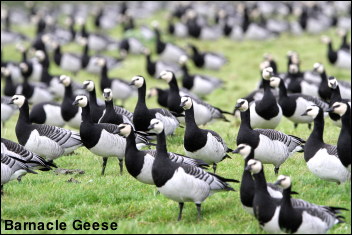
Islay in October is always wild but this years weather was in the extreme. Gales and torrential rain prevailed and our walks had to be undertaken in-between the showers, with fingers crossed. Despite this the spectacle of 50000 Barnacle Geese on one Hebridean island is not to be missed and regarded by many as the finest bird spectacle in Europe at this time of the year. In addition during October Whooper Swans migrate South from Iceland through Islay and to be stood on the North coast of Islay as these swans appear, having flown 500miles non stop from Iceland, is quite special. Click here for photos of our Islay visit.
Any visitor to Islay cannot fail to be impressed with its raptors and whilst most are reluctant to fly in the wind and rain we had sightings of most of them with the exception of Kestrel! Merlin and Hen Harriers are seen daily and you never know what is around the next corner be it a Golden Eagle or a Sea Eagle.
With spectacular seas and low tides conditions were not ideal for finding Otters and we encountered only one which in true Otter fashion disappeared after only a few minutes.
October 25, 2013 at 7:07 pm

I have never gone looking for Salmon before but after a day of heavy rain on the 23rd there followed a superb Autumn day on the 24th so I knew that if Salmon were going to come up the Ribble they would be in the right position to jump the falls at Settle that day. It worked perfectly and during the two hours I was present I reckon at least twenty Salmon tried to leap the falls but only eight succeeded in reaching the next level. Unfortunately never having taken the camera before I did not realise how close the falls would be and my 300mm lens was too big giving me some wonderful shots of Salmon with no head or tail on! Even after forty three years you never stop learning.
During the week we had a short walk at Ogden and had good views of Little Owl and fourteen Goosander. Click here for gallery I still have not had any sightings of Fieldfare.
The number of birds feeding in the garden has been increasing all week and peaked at ten House Sparrows, fourteen Goldfinches and twelve Greenfinches.
October 20, 2013 at 1:51 pm
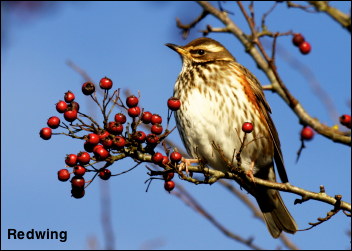
The first Redwings of Winter appeared on Hopwood on the 12th with three separate parties totalling twenty eight birds. This paled into insignificance in comparison to how many passed over Winter Hill during an eight hour watch on the same day by three birdwatchers when more than nine thousand three hundred were recorded. Clearly the South East wind had brought them in from Scandinavia and virtually all were heading in a North West direction.
The acorn crop this Autumn has provided rich pickings for Jays and their raucous calls resound through the colourful woodlands. Another Autumn visitor is the Woodcock and whilst I have not seen one locally this Autumn on the 18th one flew in front of my car on a country road near Lancaster at dusk, as I was on my way to give a filmshow. They feed nocturnally in the fields and this was almost its last flight! Click here for this week’s gallery
October 13, 2013 at 1:13 pm
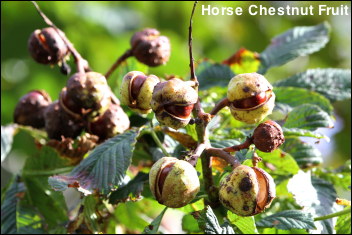
Today’s cold North East winds have probably brought to an end one of the finest late Summer and Autumn periods that we have ever had. Everywhere you look there is an abundance of fruit and I couldn’t resist this week’s photo showing the Horse Chestnuts cracking open to reveal every school boy’s dream, the conkers.
On Hopwood the blackberry crop has been exceptional with many Comma butterflies settling on the fruits. Once the wings of the Comma have been close it is remarkably camouflaged and the ‘ comma’ mark which gives it its name is clearly visible. Click here. During the week I have also seen several Small Tortoiseshell, Red Admiral. Peacock, Large White and Speckled Wood butterflies, all of which have had their best season for years. Also on Hopwood Marsh Cinquefoil has had a great flowering season and just recently the Autumn Crocus is showing well.
On the 10th, which was the sunniest day of the week, I spent three hours at Leighton Moss awaiting Bearded Tits coming to take grit from trays positioned in the reeds. At this time of the year they change their diet from invertebrates to seeds and to enable digestion of the seeds they have to ingest grit. Apparently they were very active early last week but I spent a very cold time waiting and they failed to arrive. Whilst waiting I did see my first Whooper Swans of Autumn as four flew over the reserve but they were no consolation for three hours stood around at only 6°C!
The star bird of the garden this week has been a female Great Spotted Woodpecker that has had two lengthy visits.
October 6, 2013 at 6:25 pm
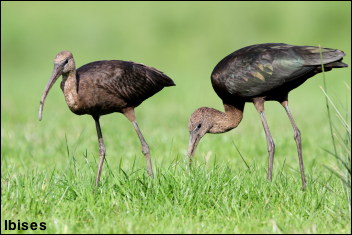
During the week I paid a visit to the Horwich moors to observe the four Glossy Ibises that had appeared a few days before. They are part of an influx that included a dozen at one locality in the Lake District and should have migrated in the opposite direction down to Iberia. The Ibises in the Lake District were very wary and unapproachable but the ones I watched were incredibly tame, feeding as close as fifteen feet on one occasion. They devoured masses of worms during their non stop feeding, I have to say they looked completely out of place and looked like they had just escaped from Chester Zoo! Click here.
On Hopwood a party of ten Bullfinches were feeding on the Rowan berries with twenty plus Goldfinches feeding on seeds in thistles and birches. A party of Long Tailed Tits numbered at least fifteen, plus Redpolls and one Siskin. No Redwings just yet but they are due anytime with a change in wind direction.
In the garden a female Great Spotted Woodpecker made a welcome visit but we can’t say the same for the male Sparrowhawk.
September 29, 2013 at 3:06 pm
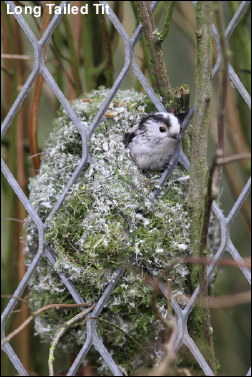
Until this last week I have seen very few Long Tailed Tits this Summer and I attributed this to an abundance of food in the woodlands. On Hopwood on the 25th at least a dozen were passing through the birches along with all the other tits so I would suspect that they have also had a good breeding season and will not be returning to the garden until they have exhausted their natural food source. In the last fifty years I have found well over five hundred Long Tailed Tits nests but never one quite like the one on this week’s blog. It was built through a mesh fence and may be quite unique. Needless to say like nine out of ten Long Tailed Tits nests it was predated by crows or Grey Squirrels.
With more good weather this week I could not resist the temptation to revisit Morecombe Bay. The two visits this week produced more good Wader sightings and photos with even an Avocet being present on one day. Click here. There was a steady stream of Swallows, Sand Martins and Skylarks heading South West. All this bird activity attracted raptors with Sparrowhawk, Buzzard, Peregrine and even a Hen Harrier hunting the salt marsh.







